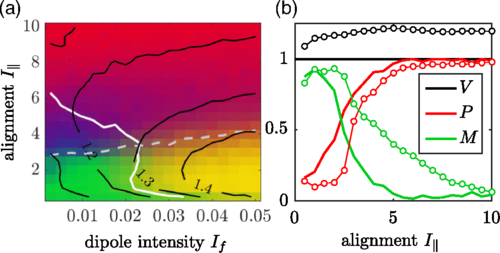|
xxxx
|
 XXXXXXXXXXXXXXXXXXXXXXXXXXXXXXXXXXXXXXXXXXXXXXXXXXXXXXXXXXXX XXXXXXXXXXXXXXXXXXXXXXXXXXXXXXXXXXXXXXXXXXXXXXXXXXXXXXXXXXXX
Model of Collective Fish Behavior with Hydrodynamic Interactions
BaC6
Marília Junqueira Caldas
Wednesday, June 06, 2018
Fish schooling is often modeled with self-propelled particles subject to phenomenological behavioral rules. Although fish are known to sense and exploit flow
features, these models usually neglect hydrodynamics. Here, we propose a novel model that couples behavioral rules with far-field hydrodynamic interactions.
We show that (1) a new “collective turning” phase emerges, (2) on average, individuals swim faster thanks to the fluid, and (3) the flow enhances behavioral noise.
The results of this model suggest that hydrodynamic effects should be considered to fully understand the collective dynamics of fish.
View full text
|